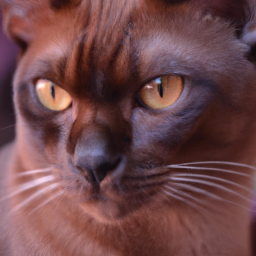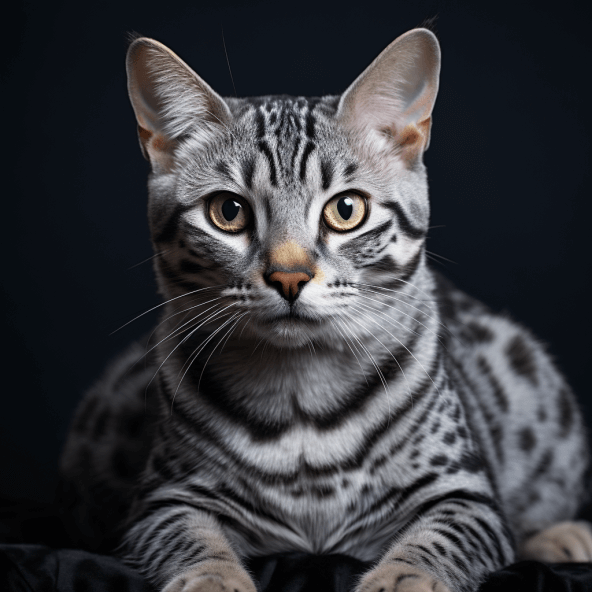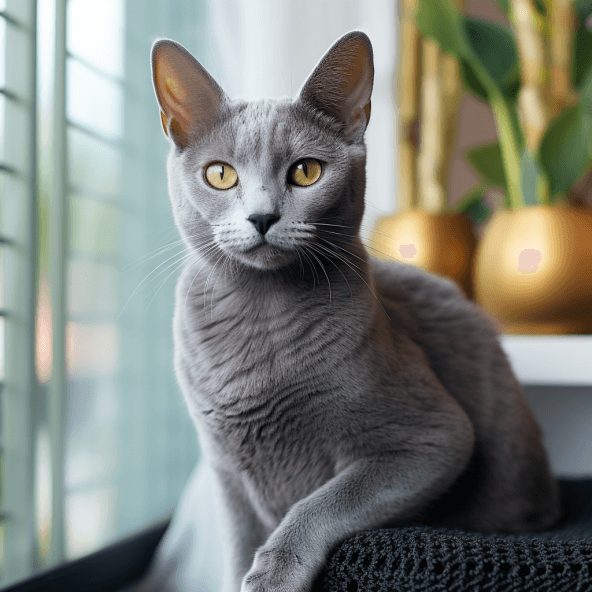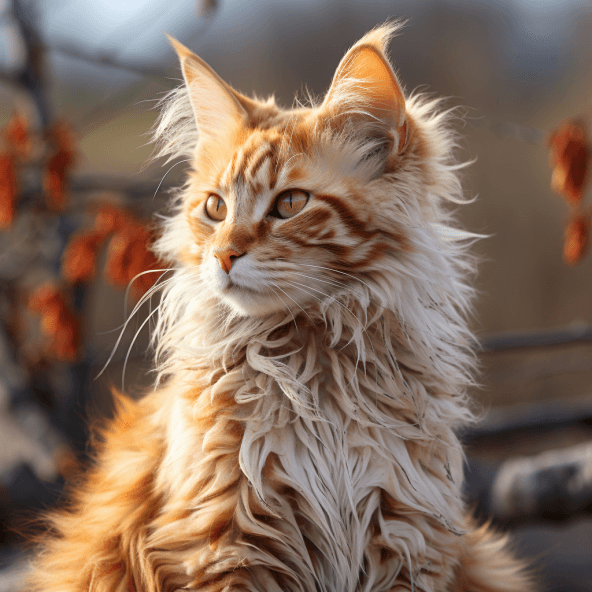Burmese – Cat Breeds
Embark on a captivating journey about one of the most exotic feline species on the planet – the Burmese. Known for their muscular physique, satiny fur, and charmingly affectionate nature, these cats can easily win over anyone’s heart in an instant. In the coming sections, you’ll unravel the allure and mystery of the Burmese cat breed, comprehend their behavior, understand their distinguishable characteristics, and uncover various tips to care for them. From their ancestry to their overall temperament, this article provides a comprehensive guide on everything you need to know about the unique Burmese cat breed.
The Origin of Burmese Cats
Brief History
The Burmese breed, a particularly exquisite and unique feline breed, boasts quite a history. The first known instance of the breed dates back to South-East Asia, where it was initially referred to as the copper cat. Early accounts depict the Burmese as regal pets kept among the aristocrats and royal families. Unlike other breeds, which often resulted from unintentional cross-breeding, the Burmese cat’s history seemed to be rather purposeful.
Region of Origin
The Burmese Cat has Asian roots, specifically in Burma, modern-day Myanmar. Some say they are native to Thailand, an assertion supported by Thai temple documents, which reportedly contain early depictions of extremely similar-looking cats. It is, however, the region of Burma that is most widely recognized as the Burmese cat’s place of origin.
Introduction to the Western World
For the longest time, the western world was oblivious to the existence of the Burmese until the late 1920s. A U.S naval medical officer brought a female Burmese, Wong Mau, back home from one of his expeditions. The look and personality of Wong Mau led to selective breeding programs aimed at broadening the Burmese breed, marking their introduction into the western world.
Burmese Cat Physical Characteristics
Size and Weight
When it comes to size, Burmese cats are medium in general. They boast quite a sturdy, muscular build and surprising weight for their relatively compact size. On average, males weigh anywhere from 10 to 12 pounds, while females usually tip the scales at around 8 to 10 pounds.
Fur and Colors
Burmese cats are renowned for their soft, shiny, and short coats which require minimal maintenance. Their fur typically dons a range of rich, dark hues including sable (a dark brown), champagne (light beige or gray), platinum (a pale gray), and blue (medium gray).
Eyes and Ears
One distinct feature of Burmese cats are their expressive, rounded eyes that come in a deep yellow or gold shade. As for their ears, they are medium-sized, set wide apart, and tilt slightly forward.
Body Structure and Features
Burmese cats are known to have a strong, compact body. A well-developed chest, round head, and a medium length tail that tapers to a rounded tip completes their physique. They have good bone structure and are often more muscular and heavier than they appear.
Burmese Cat Personality Traits
Behavior
The word that best defines a Burmese cat’s behavior is sociable. Their uncanny ability to get along with people and other animals is one of their standout traits. They are active and playful but lack the mischief that characterizes some other feline breeds.
Interaction with Humans
Burmese cats have a reputation for being people-oriented. They enjoy the affection and attention from their human family and are inclined to reciprocate in kind. They are not a breed that does well with long periods of loneliness or boredom, so make sure there is always some form of stimulation around.
Interaction with Other Pets
Other pets are usually no problem for Burmese cats. They relish the company of their kind and even tend to get along with dogs. However, as with any breed, personalities may vary, and these interactions should always be monitored.
Notable Personality Characteristics
The Burmese breed is loved for their inquisitive and affectionate nature. They are comfortable in almost any environment and will often take the lead in exploring new surroundings. They are also intelligent, adaptable, and are known for their strong bond with their human companions.
Burmese Cat Health and Lifespan
Common Health Issues
Sadly, like many pure breeds, Burmese cats are prone to a few health issues. These include inherited conditions such as craniofacial defect, flat-chested kitten syndrome and, Burmese hypo-magnesemia. Hypertrophic cardiomyopathy is also prevalent among Burmese cats.
Preventative Care and Treatments
Preventative care is crucial to catching health problems early or even before they escalate. Regular veterinary visits, vaccinations, deworming, and maintaining a balanced diet can help ensure your Burmese cat leads a long, healthy life.
Healthy Diet
Like other cats, Burmese are carnivores and require a diet rich in animal protein. Foods with high protein and moderate fat levels are excellent, as they mimic the natural diet of cats. A routine meal plan would go a long way to prevent obesity, as the Burmese are prone to excessive weight gain.
Average Lifespan
Burmese cats are known for their longevity, with an average lifespan of 10 to 16 years. However, some have been known to live beyond this.
Grooming and Maintenance of Burmese Cats
Hair Grooming
Given their short, fine coats, Burmese cats are low-maintenance when it comes to grooming. Regular weekly brushing to remove any loose fur should suffice. Baths aren’t a necessity unless your pet gets particularly dirty.
Oral Hygiene
Like all cats, Burmese need regular teeth cleaning to prevent periodontal disease. Brushing your cat’s teeth at home and scheduling regular professional dental cleanings reduce the risk of painful dental ailments.
Exercise Requirements
Burmese cats are active and playful; therefore, they require daily exercise to maintain a healthy weight. Play with them using toys or stimulating games that challenge their agile bodies and sharp minds.
General Maintenance
In addition to hair grooming and teeth cleaning, make sure to check your cat’s ears for signs of infection regularly. Trim their nails every couple of weeks if they aren’t wearing down naturally.
Training a Burmese Cat
Trainability
Burmese cats are accessible to train. Their intelligence and desire to please make them one of the more trainable cat breeds. They respond well to positive reinforcement techniques like awarding them with treats and praise.
Techniques and Tips
Try clicker training or using treats as a reward. Teach them to come when called, to lie down, or even to use a scratch post. Keep in mind, though, patience and consistency are key during the training process.
Challenges in Training
While Burmese cats are generally open to training, it’s essential to remember that each cat is unique. Some individuals may show more of a stubborn streak than others. It’s crucial to remain patient and keep training sessions short to avoid frustrating your cat.
Training for Good Behavior
Aside from learning tricks, cats can also be trained to exhibit good behavior. Make use of positive reinforcement to train your cat– rewarding them when they behave well can encourage more of the same.
Burmese Cat as a Pet
Good Fit for Families?
Burmese cats make excellent family pets. They are sociable and possess an impressive ability to get along with everyone–including children and other pets. Their interactive and friendly nature makes them ideal companions.
Interaction with Kids and Other Pets
Children and other pets are usually no problem for Burmese cats. They are playful and tolerant, qualities that make them befriend kids quite easily. However, interactions should still be supervised, especially with younger children who may not know how to handle a pet gently.
Living Environment Preferences
Burmese cats are not picky and can adapt to any living situation, be it in a city apartment or sprawling country house. However, it’s essential to create a stimulating environment with plenty of toys and play opportunities.
Attention and Activity Requirements
These cats are not the type to be left alone for long periods; they require attention and, as such, will not fare well in households where they’re left alone for extended times. Apart from physical activities, they also need mental stimulation, which can be provided through problem-solving games or puzzle toys.
Adopting a Burmese Cat
Choosing a Healthy Kitten
When choosing a Burmese kitten, make sure it looks clean and healthy. Check for signs of unhealthy conditions: dull coats, runny eyes or nose, lack of appetite, or lethargy. Healthy kittens are usually lively and curious, with bright eyes and shiny fur.
Factors to Consider When Adopting
Before adoption, you should consider various factors. Burmese cats require attention and interaction, so your lifestyle should accommodate that. You should also be prepared for the potential health issues the breed may encounter.
Where to Get a Burmese Cat
You can get a Burmese cat from a reputable breeder, rescue, or adoption center. It’s important to research beforehand to ensure that the breeder follows ethical breeding practices or that the rescue center has treated the cat well.
The Burmese Cat and its Role in Culture and Media
Burmese Cat in Movies and Television
While not as common as some other breeds, Burmese cats have made appearances in a few movies and TV shows. For example, a sable Burmese cat named Cocoa portrayed the character of Cat in the cult UK comedy “Red Dwarf.”
Symbolic Meanings in Different Cultures
In various cultures, especially where they originate, Burmese cats are seen as symbols of mystery and magic due to their sleek, shiny coats and distinctive golden eyes.
Famous Burmese Cats
Notably, one of the most famous Burmese cats was a presidential pet. Socks, a black and white tuxedo cat, was owned by the Clintons during President Bill Clinton’s administration.
Conclusion: Why Choose a Burmese Cat
Unique Qualities
Burmese cats win hearts due to their distinctive physical traits and their friendly and inquisitive nature. They’re an active breed that enjoys interacting with their human companions, yet they don’t require high maintenance.
Compatibility with Lifestyle
The breed is quite adaptable and should fit well into most lifestyles. If you are someone who spends a lot of time at home or has a family that can share the duty of entertaining the cat, a Burmese could be perfect for you.
Tips for Prospective Owners
Bear in mind that Burmese cats are social and thrives from interaction. When adopting, be ready to dedicate time and attention to them. Pay attention to their diet and health checks and make sure you provide enough mental and physical stimulation to ensure they lead a fulfilled life.
In conclusion, the Burmese is not just a cat; it’s a companion that will fill your home with love and energy. If its distinctive looks do not win you over, its loving and sociable character most certainly will.







